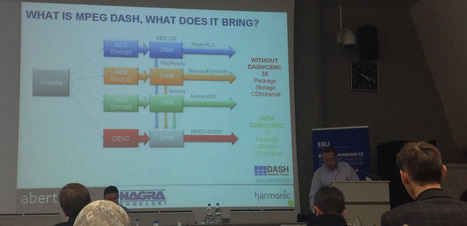It's all about DASH: Adoption is moving at a rapid pace, as industry insiders see a strong need to get DASH implemented in the field in the coming year.
The Pantos spec, as it is known in the industry, is a series of working drafts for HLS submitted by two Apple employees as an information draft for the Internet Engineering Task Force. As of the time of this article, the Pantos spec is currently at informational version 10.
Much has changed between the early versions and the most recent v10 draft, but one constant remains: HLS is based on the MPEG-2 Transport Streams (M2TS), has been in use for almost 2 decades, and is deployed widely for varied broadcast and physical media delivery solutions.
In that time frame, however, little has changed for basic M2TS transport stream capabilities. For instance, M2TS still lacks an integrated solution for digital rights management (DRM). As such, all HLS versions cannot use "plain vanilla" M2TS, and even the modified M2TS used by Apple lacks timed-text or closed-captioning features found in more recent fragmented elementary stream streaming formats.
Yet Apple has been making strides in addressing the shortcomings of both M2TS and the early versions of HLS: In recent drafts, the HLS informational draft allows for the use of elementary streams, which are segmented at the time of demand rather than beforehand. This use of elementary streams means that one Achilles' heel of HLS -- the need to store thousands, tens of thousands, or hundreds of thousands of small segments of long-form streaming content -- is now eliminated.
Google, with its Android mobile operating system platform, has adopted HLS for Android OS 4. Some enterprising companies have even gone back and created HLS playback for earlier versions of Android OS-based devices.
 Your new post is loading...
Your new post is loading...
 Your new post is loading...
Your new post is loading...












